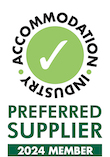How to Make Your Office Washroom Safer for Everyone
In the wake of COVID-19, the need for safe washrooms is garnering lots of publicity all over the world.
Washrooms are high-risk areas for the spread of germs, infections, and diseases. Office washrooms, in particular, have high traffic because they serve staff, clients and visitors.
Yet many organisations give little thought to washrooms.
Managers will admit that it is easy to overlook office washrooms.
Why?
Perhaps because it isn’t a direct or tangible productivity metric when compared to sales.
But ignoring your office washrooms is at the peril of your business. Poor toilet conditions influence the work environment and affect employee productivity.
Research from the UN states that the lack of adequate sanitary facilities at work can lead to:
- Poor health
- Absenteeism from work
- Attrition
- Reduced concentration at work
- Exhaustion
- Decreased productivity
These have a negative impact on your business.
When workers are healthy, they are productive. When they are unhealthy they take sick leave, which halts productivity at work.
Closer to home, a 2019 survey, shows the average Australian worker is absent from work for 11.2 days per year. This ends up costing the economy over $35 billion in wages and loss of productivity.
Now more than ever, managers have to ensure office washrooms are safe for everyone.
Wondering where to begin?
Don’t worry, we’ve got you covered! Here are some ways you can ensure your office washroom is safer for everyone.
1. Supply Good Quality Hand Soap
One of the most important steps your staff can take to avoid falling sick is to wash their hands. Managers can facilitate this basic practice of good hand hygiene by providing clean water and soap. It curbs the spread of germs, including coronavirus.
In Australia, it is a legal obligation to provide suitable hygiene facilities in the office. Clean water, a hand basin and soap in the washrooms are a basic necessity in every office washroom.
Should you offer your employees anti-bacterial handwash or regular soap?
To answer that question let’s have a look at the pros and cons.
Antibacterial handwash
Pros
- It combines the elements of antibacterial protection with moisturiser. This leaves your hands feeling soft.
- It can be used in a soap dispenser, preventing theft.
Cons
- Anti-bacterial handwash is more expensive than regular soap.
Regular soap
Pros
- Non-perfumed regular soap and water are also effective for killing germs and bacteria. Studies show that it reduces bacteria by 82%
- It is cheaper than antibacterial handwash.
Cons
- It may cause skin irritation and leave your hands feeling dry.
The Code of Practice provides guidelines on handwashing facilities in the workplace. Business owners ought to provide non-irritable soap, if possible from a soap dispenser.
Your budget will determine the soap you choose for your workplace. It need not be expensive or antibacterial. Buying soap in bulk will enable you to enjoy a good discount and save on cost.
Offer your employees enough paper towels to dry their hands. Wet hands provide a breeding ground for bacteria.
Get the Georgia Pacific-Cormatic Paper Dispenser with a lock from Australian Linens Supply. It dispenses one paper towel at a time. This is efficient and prevents wastage.
Research shows that paper towels are a better option in comparison to hand dryers.
2. Display Handwashing Guidelines and Posters
 Source: cdc.gov
Source: cdc.gov
Did you know there is a correct way to wash hands or use hand sanitisers? This may seem obvious, but don’t assume everyone in your office knows this.
Educate your staff and customers on the proper way to wash hands. Stick printable handwashing guidelines on the toilet walls.
The Centres for Diseases Control and Prevention recommends these guidelines when washing hands.
- Start by wetting your hands. Use clean cold or warm water, then turn off the tap and apply soap.
- Apply soap on your hands and lather well. Rub your hands together with the soap, starting with the palm then the back of your hands. Next rub between your fingers. Don’t forget to clean under your nails.
- Scrub the palm of your hands for 20 seconds.
- Use clean running water to rinse your hands.
- Take a clean paper towel and dry your hands. You can also air dry them.
Watch this video to see the recommended proper handwashing by World Health Organisation
 Source: Alsco NZ
Source: Alsco NZ
Follow these guidelines when using hand sanitizers.
- Pour some sanitizer on one of your palms. Always check the recommended amount to use as indicated on the product label.
- Rub your hands together.
- Spread the sanitizer over the back of your hands and fingers
Posters are a good way of reminding your staff to maintain hygiene in the washroom.
Keep them quirky. Some humour at work brightens the work environment and drives the message home with ease.
3. Provide a Reliable Supply of Consumables
Nothing is more annoying than a washroom without toilet paper.
An important part of proper washroom hygiene is to replenish toilet consumables. To avoid the risk of running out of them buy bulk toilet paper.
Install a double-roll coreless dispenser in your washrooms. It is ideal for work washrooms with high traffic because it has the capacity of holding two rolls.
It is also durable and ensures a regular supply. This reduces the time between roll changes.
Do you need a single or multiple toilet roll dispensers?
Busy toilets should have multiple toilet dispensers to ensure regular supply of toilet paper.
Factor in the space in the washrooms. If there isn’t much space, the double-roll coreless dispenser works best. Get it from Australian Linen Supply. They will install it for you free of charge.
Also, provide disposable toilet seat covers. Toilets carry many invisible germs and viruses.
The seat covers allow you to line the toilet seat before use. This protects your staff against germs and gives them peace of mind when using the toilet.
4. Have a Regular Cleaning Schedule
 Source: Freesctocks
Source: Freesctocks
To ensure your washrooms to remain good condition, have them cleaned at least once a day. This works for washrooms that have less foot traffic.
Busy office washrooms accessible by the public need cleaning several times a day.
Ensure the cleaners follow a regular cleaning schedule, that way you can guarantee deep cleaning for all surfaces.
To get the best results, train your cleaners on the standard of cleanliness you need for your office washrooms.
Here is a sample of a cleaning schedule you can follow.
|
|
|
Provide perfumed toilet cleaner and automatic air freshener. It helps in getting rid of malodour and keeps the washrooms smelling fresh all day.
Don’t forget disposal bins for female sanitary products and bins for used hand paper towels.
Bins should be cleaned and emptied on a regular basis. This goes a long way in keeping the washroom looking clean and tidy.
You need time to do regular checkups to ensure your washrooms are in good condition all the time. If your workload can’t allow you to do this, consider outsourcing the service to a cleaning company. It is more efficient.
ALS Helps Keep Office Washrooms Safer
Toilet paper is key in keeping your office washrooms safe.
For an office washroom with large traffic, jumbo toilet rolls are the best option. They are durable and will save you the cost of restocking every now and then.
You can buy these in bulk from Australia Linen Supply.
Contact them today for all your toilet paper needs. You’ll wish you called sooner.
Source: Pexel

















